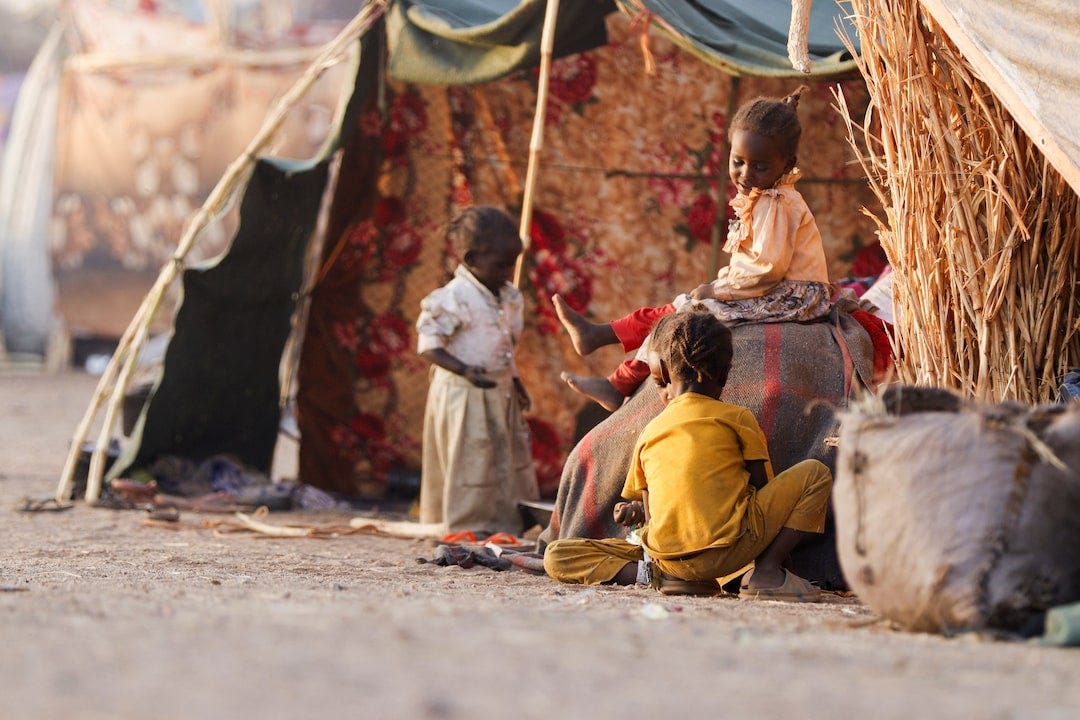In Sudan, children are dying so quietly the world barely notices. There are no cameras in the hospital wards that no longer have medicine, no reporters at the community kitchens that closed when the money stopped, no breaking-news chyrons when another toddler dies with nothing in their stomach but a few sips of dirty water. This isn’t an accident. It’s the byproduct of political decisions, deliberate budget cuts, and the kind of global apathy that allows the slow, preventable death of hundreds of thousands to be called a “funding shortfall” instead of what it really is: a man-made famine.
The numbers are so obscene they should scream off the page: 25 million people acutely food insecure, over 770,000 children under five on track to suffer severe acute malnutrition this year, and nearly 100,000 cholera cases since last summer. That’s not a set of grim statistics. That’s the collapse of a nation’s ability to keep its youngest citizens alive. It’s the erasure of an entire generation’s future before they even reach school age.
THE CUT THAT BLED A COUNTRY DRY
The U.S. was once Sudan’s largest humanitarian donor. USAID funded almost half the international aid reaching the country. Then, with the flick of a legislative pen and the grinning cruelty of budget hawks who will never see a famine up close, that support was ripped away. Community kitchens—lifelines for displaced families—shut down. Nutrition programs vanished. The Famine Early Warning Systems Network went dark for months, leaving aid workers without critical data as hunger spread like fire in a drought.
What happens when 83% of USAID’s programs are eliminated and the agency is swallowed whole by the State Department? Children die. Mothers stop producing breast milk because they’re starving themselves. Pregnant women lose their babies because they can’t find enough calories to keep a pregnancy viable. Kids who should be chasing each other barefoot in the dust instead lie on mats, motionless, their bodies wasting away while their parents wait for food trucks that will never come.
SIEGE AND STARVATION AS TWIN WEAPONS
The conflict between Sudan’s army and the Rapid Support Forces isn’t just bullets and bombs—it’s sieges. Towns like Al-Fashir have been surrounded for months, with food and medicine deliberately kept out. Zamzam camp, where famine was confirmed over a year ago, hasn’t received food deliveries in that time. Let that sink in: a confirmed famine zone, one year without food aid. That’s not neglect. That’s starvation used as a weapon of war.
And here’s the sick symmetry: while armed forces block roads and loot trucks, donor nations cut funding. The result is a perfect feedback loop of death. Aid can’t get through because there’s no safe passage. And even if there were, there’s no money to fill the trucks.
THE HUMAN FACE OF 23%
The United Nations says Sudan’s $4.16 billion humanitarian plan is just 23% funded. That’s the polite, bureaucratic way of saying: “We have enough money to save a quarter of the people who are about to die.” It’s the equivalent of handing a family of five one plate of food and telling them to “figure it out.”
When Sheldon Yett, UNICEF’s representative in Sudan, says children are “reduced to just skin, bones,” he’s not using a metaphor. He’s describing the actual bodies aid workers are holding in their arms. He’s describing the moments when you peel a child’s shirt back to check for signs of swelling and instead see ribcages sharp enough to leave marks on your palm.
THE BLOOD ON THE LEDGER
Every skeletal child in Zamzam camp, every mother in Al-Fashir holding a baby too weak to cry, every grave dug too soon in Darfur’s dirt — there’s a straight line between those lives and these votes. Between the aid trucks that never left the warehouse and the floor speeches bragging about cutting “waste.” Between the expired therapeutic food sitting in Port Sudan and the Senate tie-breaker that made it possible.
THERE IS NO COMING BACK FROM THIS
Malnutrition in early childhood isn’t just deadly—it’s permanent. For those who survive, the damage is lifelong: stunted growth, cognitive delays, immune systems that never fully recover. That’s what UNICEF means when they say Sudan’s children are on “the brink of irreversible harm.” This isn’t just about saving lives in the short term. It’s about saving the possibility of a future where these children can think, learn, and work.
Cutting aid to Sudan doesn’t just kill the hungry. It kills the doctors they could have become, the teachers, the leaders, the parents. It rips out the roots of a society so thoroughly that decades from now, the country will still be living in the shadow of these decisions.
HISTORY WILL ASK
One day, when the archives are opened and the memos are read, it will be obvious who decided Sudan’s children weren’t worth saving. And when history asks why so many children died, the answer will be simple: because the people who could have saved them didn’t.
If you believe articles like this matter, subscribe — free or paid — and help us keep doing the work.
This post has been syndicated from Closer to the Edge, where it was published under this address.


